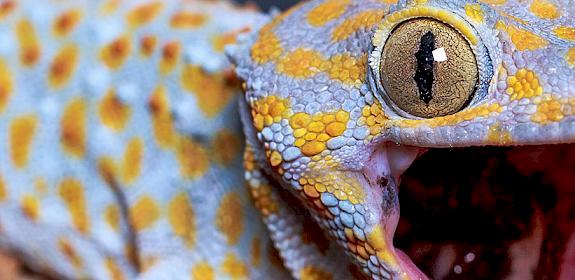- »
- báo cáo »
- Reports »
- Keeping an ear to the ground: Monitoring the trade in earless monitor lizards
Published 10 September 2014
International smuggling threatens Borneo's remarkable "earless" lizard
Kuala Lumpur, Malaysia, 10th September 2014—An unusual and little-known monitor lizard from Borneo that has captured the interest of reptile collectors is emerging as the latest victim of the global illicit wildlife trade, an investigative report by TRAFFIC warns.
Keeping an ear to the ground: Monitoring the trade in earless monitor lizards
Report author(s):
V. Nijman and S. S. Stoner
Publication date:
September 2014
key findings
Lanthanotus borneensis or the Earless Monitor Lizard had long remained virtually unknown to the outside world due to its subterranean habits and limited distribution in north-western Borneo. Unknown, that is, until recently gaining attention from unscrupulous reptile collectors.
Earless Monitor Lizards have no external ear opening, a cylindrical lengthened body covered in scaly tubercles (due to an increased number of vertebrae), small limbs, a prehensile tail, a forked tongue, and small eyes with the lower eyelid covered by translucent “windows”. As such it is placed in its own monospecific family Lanthanotidae.
The small, orange-brown lizard with beaded skin was once primarily of interest to scientists because of its unique adaptations for living below ground, and there were few instances of private ownership reported during the last 30 years. However, there has been a sudden emergence in the trade of this species over the past two years.
Through its research, TRAFFIC detected international trade in Earless Monitor Lizards that has largely been carried out online from 2013 onwards. Specific instances mentioning the species were documented on forums and social networking sites in Japan, the Ukraine, France, Germany and the Czech Republic.
The study found specimens being offered for sale online across Europe and received intelligence about a significant offtake of the animals from the wild. This was corroborated by discussions in online forums on the availability of the animals for sale, where there were frequent references to the lizard as being the “Holy Grail” of the reptile collecting world.
“Our research highlights the importance of the Internet and social media in the trafficking of species in high demand by specialist collectors: the reach online traders have is both instant and global,” said Sarah Stoner, Senior Wildlife Crime Analyst at TRAFFIC and co-author of the report.
Keeping an ear to the ground: Monitoring the trade in earless monitor lizards, illustrates the international scope of the trade and the need for international enforcement efforts.
The Earless Monitor Lizard is legally protected in its native range countries of Brunei Darussalam, Indonesia and Malaysia. The sudden, growing international interest in the species, however, raises concern given the absence of international trade regulations that would criminalize any such activity. Currently, this is the only species of monitor lizard not protected from over exploitation under the Convention on International Trade in Endangered Species of Wild Fauna and Flora (CITES).
“For zoologists and conservationists working in Asia, the Earless Monitor Lizard is truly a mythical creature and something we have read about in the classical scientific literature. The last detailed observations were made on individuals caught in Malaysian Borneo and date from the 1960s. It is very sad indeed that the next time the Earless Monitor Lizard resurfaces after an absence of almost 50 years it is individuals being illegally traded internationally,” said Dr Vincent Nijman, Professor of Anthropology at Oxford Brookes University and author of the report.
TRAFFIC recommends that the Governments of Brunei Darussalam, Indonesia and Malaysia list Earless Monitor Lizards in Appendix III of CITES as an immediate interim action to allow proper monitoring and regulation of trade in this species. Appendix III of the Convention requires that trade must be conducted only with the appropriate paperwork, which allows countries to track and assess levels of international trade.
TRAFFIC also recommends the species be eventually listed in Appendix I of CITES, and that enforcement agencies in end-use countries increase their vigilance and efforts to crack down on the availability of these stolen reptiles. A listing in Appendix I of the Convention means all commercial international trade in this species would become illegal.
Earless Monitor Lizard
until recently was virtually unknown to the outside world due to its subterranean habits and limited distribution in Borneo.
Recent rediscovered
the Earless Monitor Lizard has made a sudden emergence into trade over the past two years.
Earless Monitor Lizard
has a number of unique anatomical features and is placed in its own monospecific family Lanthanotidae





